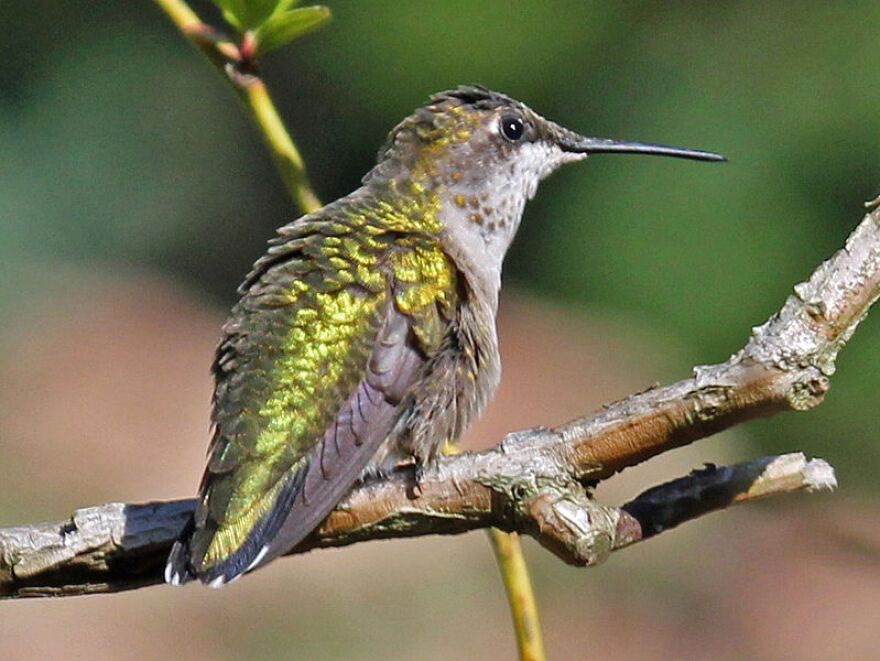Temperatures are dropping, and as we move closer to winter many species are migrating south.
In today’s Wildlife Matters, DNR Wildlife Biologist Jeremy Holtz talks about the different ways birds make the trip.
My mom always used to tell me that hummingbirds traveled south for the winter riding on the backs of Canada geese. While this is a charming and compelling tale, the fact is that these little birds migrate the same way all other birds do – they fly.
Migration is an amazing survival adaptation that allows birds to travel long distances between winter and summer homes. They use many different tools to navigate. Some species use geographical landmarks, others fly at night using heavenly bodies, and some have a kind of built in magnetic compass in their heads. Birds also have many different ways of travelling south. Some leave early, fly extremely far, and come back as soon as possible. Shorebirds fall into this category—they actually started migrating south in August, leaving from near the Arctic circle and travelling 3,000 miles or more to Central and South America. I was reminded of this when I saw a shorebird recently that I usually only see in spring; he was actually a bit behind schedule, and has a long ways to go. An interesting contrast is a distant shorebird relative, the American Woodcock. This bird has adapted to living in fields and forests, where it finds its food in the shallow mud. The woodcock won’t be migrating for at least another month. These birds fly in rather small groups, just above the treetops, and might only travel a few miles a day.
Other birds will gather up to migrate as a large group, heading south just ahead of freezing water. Ducks and geese are good examples; they “stage” in areas before they migrate, then move south in large flocks, staying just south of the snow and frozen water line. The nature of waterfowl migration easily debunks my mom’s “old wives’ tale” about hummingbirds and geese. Geese can fly in the upper atmosphere, at average speeds of 40 mph. I doubt a hummingbird could even hang onto a goose’s back at those speeds, heights, and temperatures. Additionally, I believe Canada geese stop in the gulf coastal region, too far north for hummingbirds. (Thanks, mom! Oh, and another thing—if you touch a baby animal, the mother will not necessarily abandon it. And toads do not give you warts.)
Many small songbirds, what we biologists call neotropical migrants, form such large flocks that they can be picked up on weather radar. They can travel halfway across the continent without stopping, if the conditions are right. They travel to Central America or northern South America and settle into their winter home.
So what do hummingbirds do? They leave Canada and the northern U.S. and fly solo about 2,000 miles to Panama. Their straight-line flight would have to include passing over the Gulf of Mexico, hundreds of miles over open water—during hurricane season. Thanks to specially modified wing bones, they flap their wings about 80 times a minute. They can sustain a speed of 25 miles per hour, and they can fly up to 600 miles before they use up all their available fat and fuel reserves. They may need to cross up to 500 miles of the Gulf to get to Panama. Once there, they rest, feed, and prepare to head back up to our latitude first thing in spring. These birds travel thousands of miles annually to spend the growing season in Wisconsin and drink from my bird feeder.









